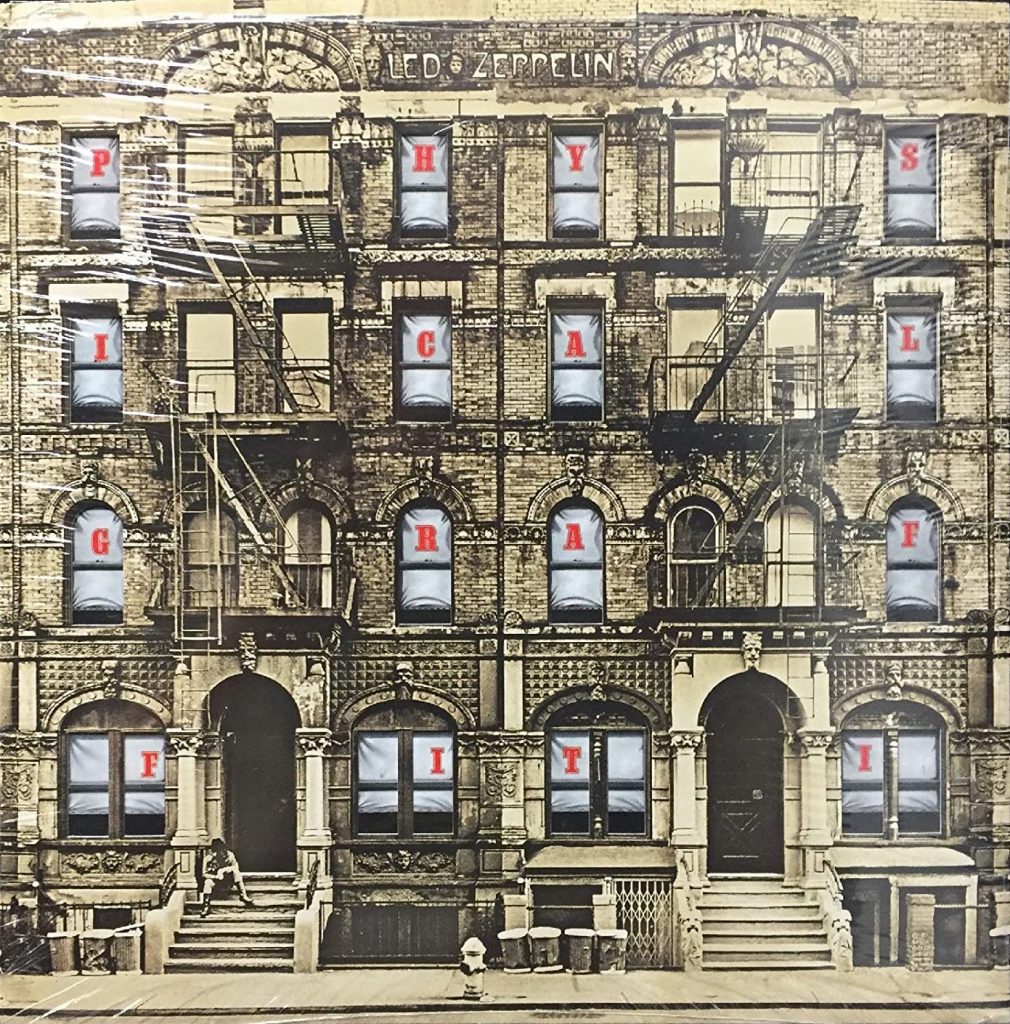What comes to mind when you hear the band name Led Zeppelin?
Videos by American Songwriter
Is it the band’s lead singer and lyricist Robert Plant? The lengthy, but iconic, “Stairway to Heaven“? Whatever it may be, we can’t help but think of “Kashmir” and the album that houses the song, Physical Graffiti.
But what of Physical Graffiti? We know that it was officially released in 1975 as a double album and that the record has only grown in significance since then. But what is not commonly known, is the story behind the album’s immediately recognizable album art. The solemn-seeming album cover is mysterious, yet curious, and we wanted to know more.
So, read below for the little-known story behind the Physical Graffiti album cover.

The Physical Graffiti Building
The building on the cover of the Physical Graffiti album is a physical place. It’s actually two physical places; it’s two apartment buildings that were built side by side at 96 and 98 St. Mark’s Place in New York City, New York.
Graphic designer Peter Corriston found the buildings for the cover and masterminded the artwork into existence. Corriston also collaborated with art director and designer Mike Doud on a unique feature for the Physical Graffiti album. The original album jacket included internal sleeves that could be swapped out to present different scenes in the St. Mark’s Place building. One such scene is, of course, the red letters that spell out “Physical Graffiti” in each window. Another sleeve scene includes photos of notable celebrities in each window, including W. C. Fields, Pope Leo XIII, and Buzz Aldrin.
Additionally, the front side of the album jacket is a daytime scene, while the back is a night scene.
”We walked around the city for a few weeks looking for the right building,” Corriston said in a 2008 interview about the Physical Graffiti art. ”I had come up [with] a concept for the band based on the tenement, people living there and moving in and out. The original album featured the building with the windows cut out on the cover and various sleeves that could be placed under the cover, filling the windows with the album title, track information, or liner notes.”
Check out a video of a fan displaying the album below.
Did you know?
The two St. Mark’s Place buildings are actually five-story buildings, but you only see four stories on the Physical Graffiti cover. Corriston cropped out one of the building’s floors to ensure that square shape that defines album covers. Further, Corriston’s design was so intricate for the album cover, that the manufacturing of the album took longer than expected and delayed the album release for a few months.
Another little-known fact is that the St. Mark’s Place buildings play a role in the musical history of another famous band, The Rolling Stones. In the Stones’ 1981 “Waiting On A Friend” music video, Mick Jagger is filmed waiting for bandmate Keith Richards on the stoop of the famous buildings.
Oh, and another thing about Peter Corriston. He also worked with The Rolling Stones on four of their album covers: Some Girls, Emotional Rescue, Tattoo You, and Undercover. What a small world.

Well that is cool. Especially about the Stones waiting on a Friend.